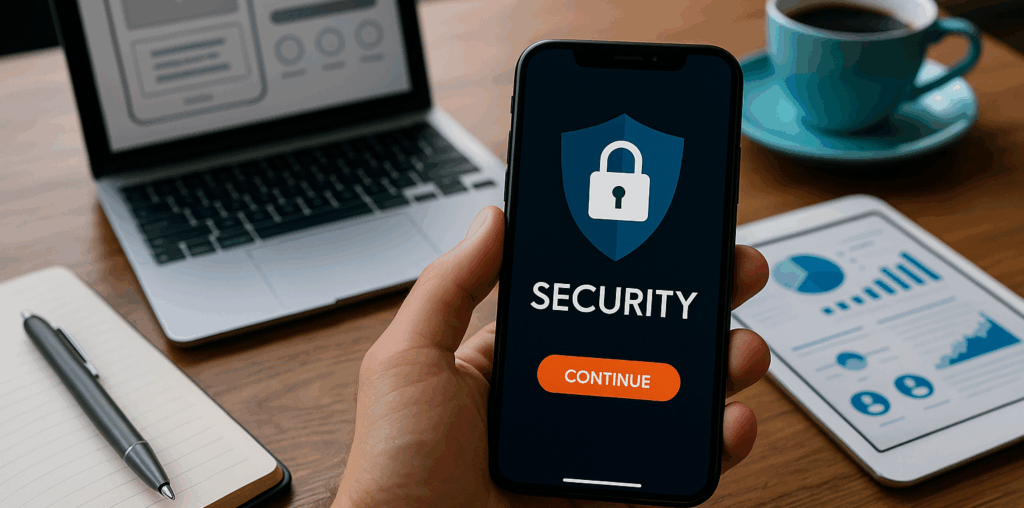In the dynamic and often perilous digital landscape, mobile applications are a prime target for cybercriminals. From sensitive user data to intellectual property, the stakes are incredibly high.
For any Mobile App Development Agency, embedding security into every facet of the development process is not merely a recommendation; it’s a fundamental imperative to protect users, maintain trust, and safeguard reputations. This article outlines six essential security practices that every mobile app developer should diligently implement.
1. Implement Secure Coding Practices
The bedrock of a secure mobile app is its underlying code. Vulnerabilities introduced during the coding phase can create exploitable weaknesses that attackers can leverage. Secure coding practices are a continuous discipline, not a one-time fix.
- Input Validation and Sanitization: This is perhaps the most critical defense against a vast array of attacks, including SQL injection, cross-site scripting (XSS), and command injection. Every piece of user input, whether from forms, APIs, or external sources, must be rigorously validated on both the client-side (for user experience) and, more importantly, the server-side (for true security). Sanitize inputs by removing or encoding potentially malicious characters before processing.
- Avoid Hardcoding Sensitive Data: Never hardcode sensitive information like API keys, database credentials, encryption keys, or passwords directly into the application’s source code. If an attacker gains access to the app’s binary through reverse engineering, these secrets become immediately exposed. Instead, utilize secure key management systems, environment variables, or secure server-side configurations.
- Secure Error Handling and Logging: While it’s important to catch errors, exposing too much information in error messages (e.g., stack traces, database details) can provide attackers with valuable clues about your app’s internal workings. Implement generic error messages for users and ensure detailed, secure logging happens only on the server-side, with strict access controls. Similarly, avoid logging sensitive user data on the device or in publicly accessible logs.
- Principle of Least Privilege: Design your app so that each component, module, and user only has the minimum necessary permissions or access required to perform its function. For instance, if a feature doesn’t need access to the device’s camera or contacts, don’t request those permissions. This limits the damage an attacker can inflict if one part of the app is compromised.
- Secure Session Management: Implement robust session management to prevent session hijacking and fixation attacks. Use strong, randomly generated session IDs, ensure sessions expire after a period of inactivity, and invalidate sessions upon logout. Avoid storing session tokens in insecure locations on the device.
By adhering to these secure coding guidelines, a Mobile App Development Agency can significantly reduce the attack surface and build a more resilient application from the ground up.
2. Protect Data at Rest and in Transit
Mobile apps frequently handle sensitive user data, both when it’s stored on the device (at rest) and when it’s being transmitted over a network (in transit). Protecting this data is non-negotiable.
- Encryption for Data at Rest: Any sensitive data stored locally on the user’s device (e.g., databases, configuration files, cache) must be encrypted using strong, industry-standard algorithms (e.g., AES-256). Leverage platform-specific secure storage mechanisms like Android Keystore or iOS Keychain, which are designed to protect encryption keys and sensitive data. Avoid storing sensitive data in plain text, even in temporary files or caches.
- Secure Communication (HTTPS/TLS): All communication between the mobile app and backend servers must occur over secure, encrypted channels. Always use HTTPS (HTTP over TLS/SSL) with properly configured TLS versions (e.g., TLS 1.2 or higher) and strong cipher suites. Avoid outdated or vulnerable protocols. This prevents eavesdropping and man-in-the-middle (MITM) attacks.
- Certificate Pinning: To further bolster network security, implement certificate pinning. This involves embedding or “pinning” the expected server’s public key or certificate within the mobile app. The app then verifies the server’s certificate against the pinned one during every connection. If they don’t match, the connection is terminated, effectively preventing MITM attacks where attackers use fraudulent certificates.
- Minimize Data Storage: The less sensitive data stored on the device, the lower the risk in case of device compromise. Store only essential data locally and fetch other information from the backend when needed. Implement clear data retention policies and ensure sensitive data is securely wiped when no longer required.
A reputable Mobile App Development Agency prioritizes data protection, understanding that a single data breach can severely damage user trust and brand reputation.
3. Implement Robust Authentication and Authorization
Strong user authentication and proper authorization are critical gateways that prevent unauthorized access to your app’s features and data.
- Strong Authentication Mechanisms: Beyond simple username/password, implement robust authentication. This includes:
- Multi-Factor Authentication (MFA): Add an extra layer of security, such as a one-time password (OTP) sent to a registered device, biometric authentication (fingerprint, face ID), or security tokens.
- Password Policies: Enforce strong password policies (minimum length, complexity requirements, regular changes).
- Account Lockout Mechanisms: Implement account lockout after a certain number of failed login attempts to deter brute-force attacks.
- Secure Authorization: Once a user is authenticated, ensure they only have access to the resources and functionalities they are permitted to use. Implement role-based access control (RBAC) on the backend to manage user permissions. Never rely on client-side checks for authorization, as these can be easily bypassed.
- Avoid Storing User Credentials on Device: As mentioned, user credentials should ideally not be stored locally in plain text. Instead, use secure authentication tokens (e.g., OAuth 2.0 tokens) that have limited lifespans and can be revoked.
These measures are crucial for protecting user accounts and preventing unauthorized access to sensitive information, a core competency for any leading Mobile App Development Agency.
4. Protect Against Reverse Engineering and Tampering
Mobile app binaries can be reverse-engineered by attackers to understand their logic, discover vulnerabilities, or even embed malicious code and re-distribute them.
- Code Obfuscation: Apply code obfuscation techniques to make the app’s compiled code (binary) more difficult to understand and reverse engineer. This involves renaming variables, classes, and methods, encrypting strings, and modifying control flow. While not foolproof, it significantly increases the effort required for an attacker.
- Tamper Detection: Implement mechanisms within the app to detect if its code or resources have been modified or tampered with since installation. If tampering is detected, the app can respond by alerting the user, reporting the incident, or even refusing to run certain functionalities.
- Root/Jailbreak Detection: Detect if the app is running on a rooted (Android) or jailbroken (iOS) device. These environments bypass native security mechanisms, making the device and its apps more vulnerable. While not always feasible to block entirely, apps can limit functionality or provide warnings when running on such devices.
- Anti-Debugging: Implement techniques to detect if an attacker is trying to debug the app at runtime, which is a common way to analyze its behavior and find vulnerabilities.
A vigilant Mobile App Development Agency integrates these protections to safeguard intellectual property and prevent malicious repackaging.
5. Secure Third-Party Libraries and APIs
Modern mobile app development heavily relies on third-party libraries, SDKs, and APIs to accelerate development. However, these components can introduce significant security risks if not managed carefully.
- Vulnerability Management: Regularly audit and update all third-party libraries and SDKs to their latest versions. Outdated libraries often contain known vulnerabilities that attackers can easily exploit. Subscribe to security advisories for the libraries you use.
- Careful Selection: Before integrating a third-party component, thoroughly vet its security posture. Look for reputable sources, active maintenance, clear security policies, and a history of promptly addressing vulnerabilities.
- Principle of Least Privilege for APIs: When integrating with external APIs, ensure that your app only requests the necessary permissions from these APIs. Harden your own API endpoints with proper authentication, authorization, and input validation to prevent common API threats.
- Monitor for Supply Chain Attacks: Be aware of the growing threat of supply chain attacks, where malicious code is injected into popular open-source libraries or build tools.
A responsible Mobile App Development Agency understands that its app’s security is only as strong as its weakest link, including third-party dependencies.
6. Integrate Security into the Development Lifecycle (Secure SDLC)
Security should not be an afterthought or a last-minute addition. It must be woven into every stage of the Software Development Lifecycle (SDLC).
- Threat Modeling: Begin by conducting threat modeling during the design phase. Identify potential threats, vulnerabilities, and attack vectors specific to your app’s functionality and data flow. This proactive approach helps in designing security controls from the outset.
- Security Requirements: Define clear security requirements alongside functional requirements at the beginning of the project.
- Code Reviews and Static/Dynamic Analysis: Integrate security-focused code reviews. Use Static Application Security Testing (SAST) tools to automatically scan source code for common vulnerabilities early in development. Employ Dynamic Application Security Testing (DAST) tools to test the running application for vulnerabilities.
- Penetration Testing (Pen Testing): Before launch and periodically thereafter, engage independent security experts to perform penetration testing. These “ethical hackers” simulate real-world attacks to uncover hidden vulnerabilities that automated tools might miss.
- Incident Response Plan: Have a clear plan in place for how to respond to a security incident (e.g., data breach, attack). This includes communication protocols, containment steps, forensics, and recovery procedures.
- Regular Updates and Patches: Security is an ongoing process. Regularly update your app to patch newly discovered vulnerabilities, address security advisories, and ensure compatibility with the latest OS security features.
By adopting a Secure SDLC, a forward-thinking Mobile App Development Agency builds security in from the ground up, rather than trying to bolt it on later, significantly reducing risks and delivering more secure products to its clients and their users.
Conclusion
The digital landscape is constantly evolving, and so are the threats to mobile applications. By meticulously implementing these six essential security practices—from secure coding and data protection to robust authentication, anti-tampering measures, careful third-party management, and a comprehensive Secure SDLC—mobile app developers can build applications that inspire confidence and stand resilient against the increasing sophistication of cyber threats. For any Mobile App Development Agency, prioritizing security is not just about compliance; it’s about building trust, protecting users, and ensuring long-term success in the competitive mobile market.



